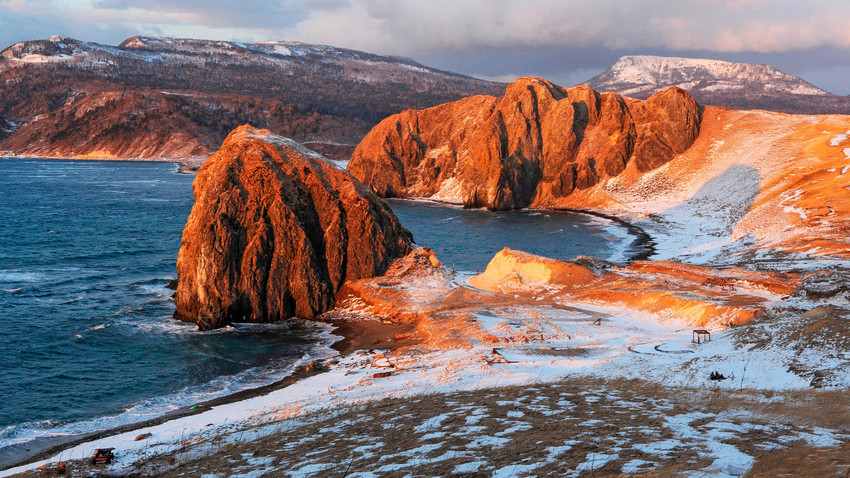Geotagged: Russia's Kuril Islands, claimed by Japan

Kunashir island
Andrey Shapran/SputnikLandscape
Known as the Kuriles for short, the archipelago consists of a chain of 56 islands in the Pacific Ocean, connecting the Russian peninsula of Kamchatka with the Japanese island of Hakkaido. For decades now, Japan has been trying to claim ownership of four of the islands - Iturup, Kunashir, Shikotin and the Khabomai island cluster. This, however, does not have much impact on the lives of the locals. As one of Russia’s remotest territories, life here has gone unchanged for decades.
The Kuril Islands are of volcanic origin. Many villages and even some small towns are sited literally on the slopes of active volcanoes. The fog here is very thick, and sometimes visibility is reduced to two meters.
Frequent earthquakes, tsunamis and eruptions have caused people to leave their homes on more than one occasion. For that reason, the islands are full of abandoned places and no building is more than 2-3 stories high. Not far from an old abandoned lighthouse there is even a tank cemetery and a flooded bunker, once used for military operations.
There are several boiling lakes here, all heated by volcanic gases. One of them is located on Kunashir, the southernmost island in the Greater Kuril Chain. The distance from Kunashir to Japan is a mere 16 kilometers. Beyond lies only the uninhabited Lesser Kuril Chain. A special permit is needed to visit Kunashir, since it is a border zone.
People
For more than a thousand years, the indigenous population of the Kuriles were the Ainu, but by the 19th century they were dying out and their existence on the island had been reduced to reservations. After Japan’s defeat in WWII, the surviving Ainu, about 200 people, were repatriated to Japan.
To this day, the Japanese history of the southern Kuriles shows through in the routine discovery of ancient artifacts. For example, items of old Japanese porcelain can be found whilst strolling along the coast of Kunashir.
Today, the Kuril Islands have a total population of 20,500 people. The largest island is Iturup with the town of Kurilsk, home to 6,409 people and the hub of all business (relatively speaking). There are no shopping centers, but a small cinema does exist. All vehicles are Japanese-made. Asphalt is not ubiquitous.
Details
The islands essentially live off fishing, and the industry is the backbone of the Kuriles' entire economy. People get “northern supplements,” i.e. extra wages to compensate for living and working in a harsh climate. Many come here from mainland Russia to earn money and benefits, and then leave for more pleasant climes.
On the plus side, the staple breakfast here is caviar (which most of mainland Russia considers a delicacy). Every year, tourists come to the Kuril Islands, but trips here are among the most expensive in Russia. Because it is very far and very beautiful.
If using any of Russia Beyond's content, partly or in full, always provide an active hyperlink to the original material.
Subscribe
to our newsletter!
Get the week's best stories straight to your inbox